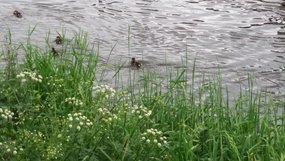 Goosander chicks on the River Kent
Goosander chicks on the River Kent Swifts and house martins wove a dizzying web over the river, feeding low, house martins lit by white rump against dark water. So fast, so agile, sweeping up above the trees in twisting and turning flight. A house martin's nest was tucked below the eaves, riverside, and birds zipped in and out again. Goosander flew fast and low upriver, with rapid wing beats.
Look down over Stramongate Bridge on the northern side and there's a tunnel- I discovered it watching someone peering intently over the parapet and I was curious. What was I missing? Might have been an aspect of engineering. Today, it was my turn for discovery. Beyond the white froth of flowers a goosander dived and as she surfaced I saw a tiny chick half-hidden by vegetation. Then another, and another, innumerable in their jostling closeness. Their mother dived, impossible to tell quite how her young were feeding. She swam north against a fast current and sometimes her chicks climbed onto her back and hitched a ride. Swimming the near bank where flowers hid them, under the trees, by the holt made to encourage the otter who were seen here last week. A bystander tells me he saw one take a large egg. He grew up here and walks the riverside every day. Few know how much there is here, he says. Come at dawn to see the best of it.
She led her brood beneath the bridge and I hurried onto it to photograph them directly from above. Like dazzle-ships, her patterned chicks swam in snaking line in her wake: chestnut down on their heads, and blots of white on the darker plumage of the mantle. I wish I could see their feet but the chicks are tiny and they swim in sudden spurts, not yet the confident rhythms of the adult goosander, river birds who know their river. She'll keep them above the weir, not yet robust enough for that.
I had only a smartphone camera for these images, so I hurried home to collect a more powerful camera. I retraced my morning route but could not find the goosander and her brood. No idea who the local man might be, who told me he'd lived here all his life and came here every day, and that goosander had come back to the river. That chimes with the British Trust for Ornithology, whose website tells of the species coming to the north of England in the 1940s and colonising here.
Tweet of the Day. Goosander with Kate Humble. 28 October 2020
A female goosander, disturbed on her tree hole nest, will hiss at the intruder. Females and young are known as red-heads.
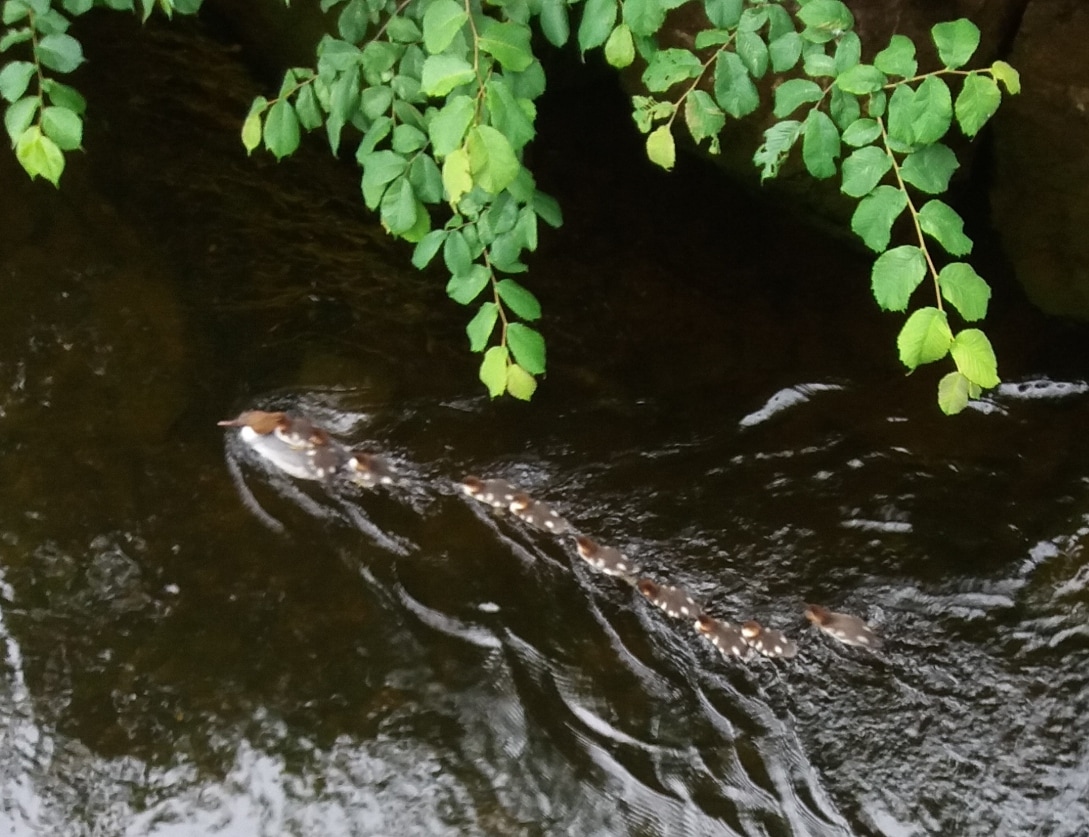
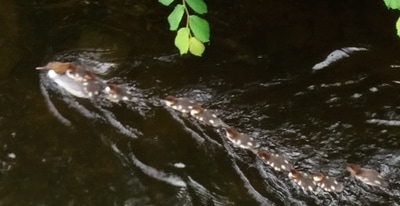
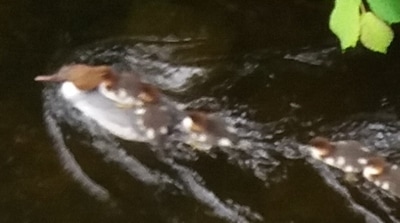
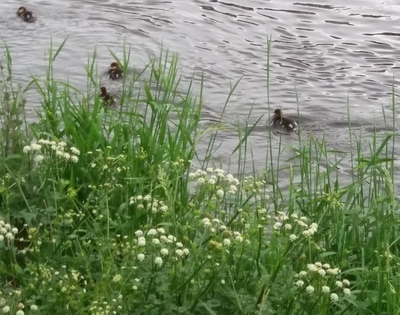
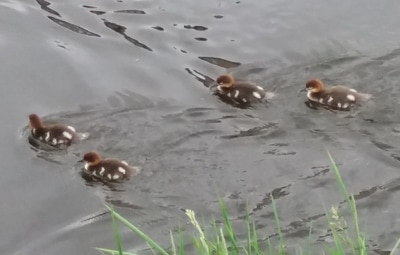
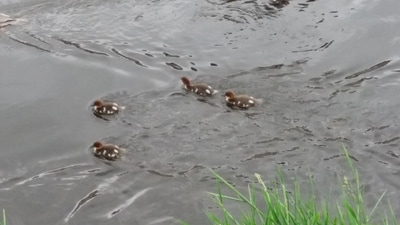
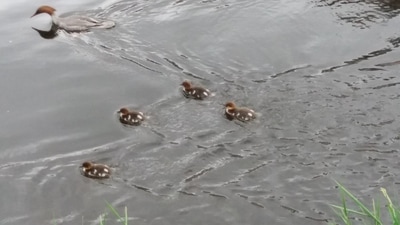
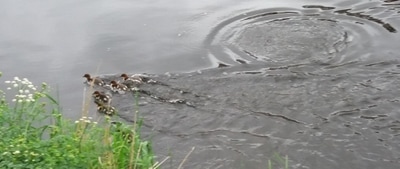
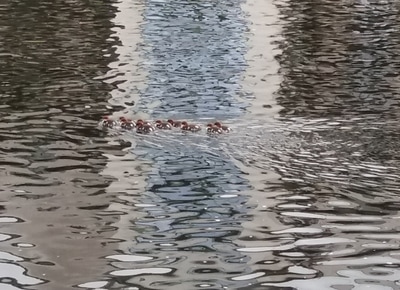
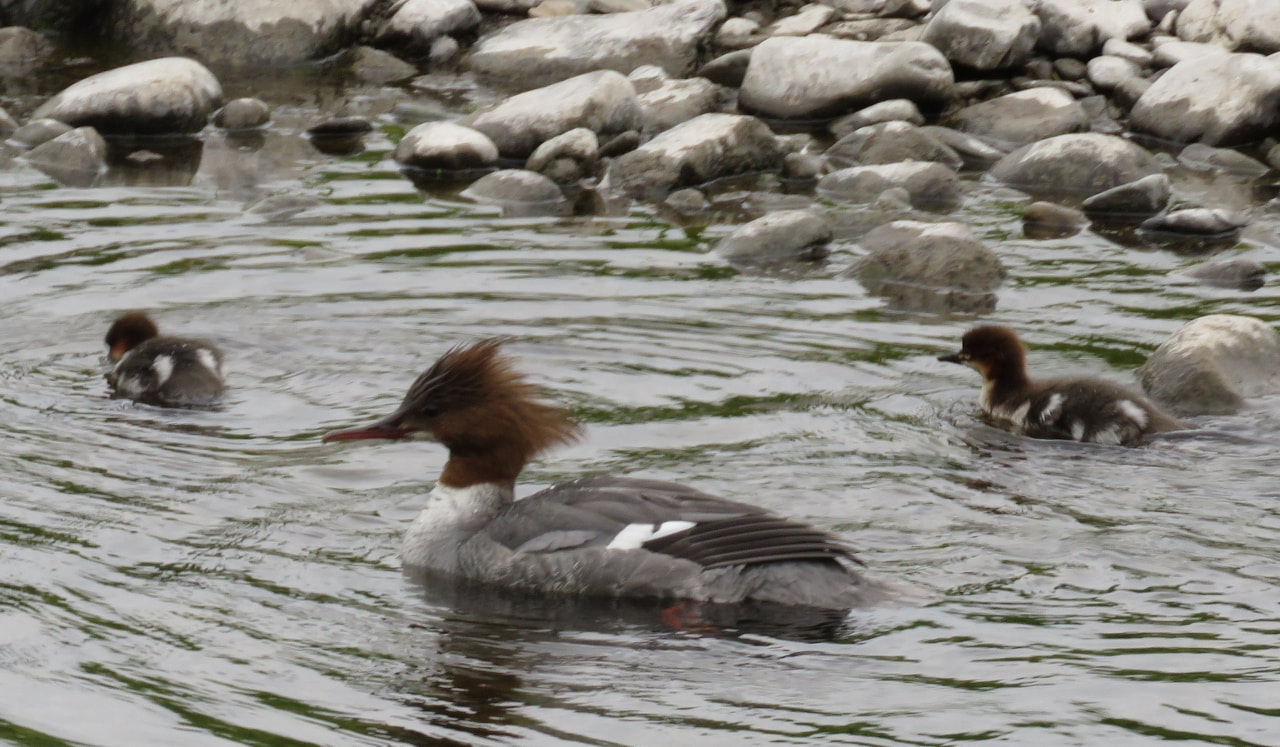
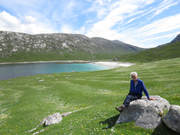
 RSS Feed
RSS Feed